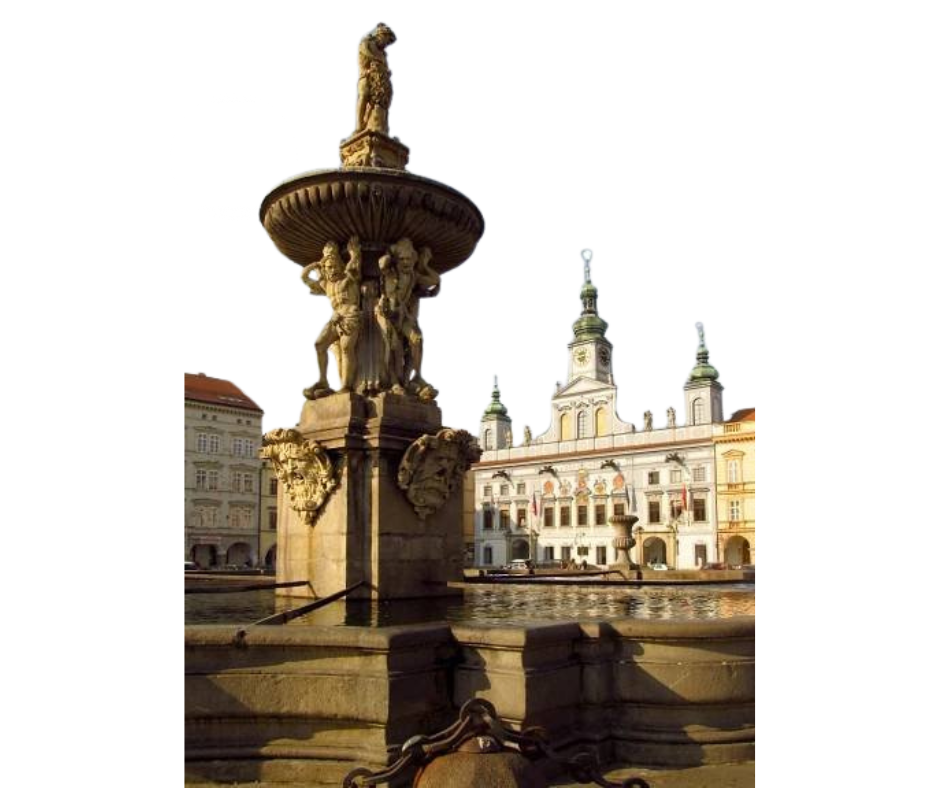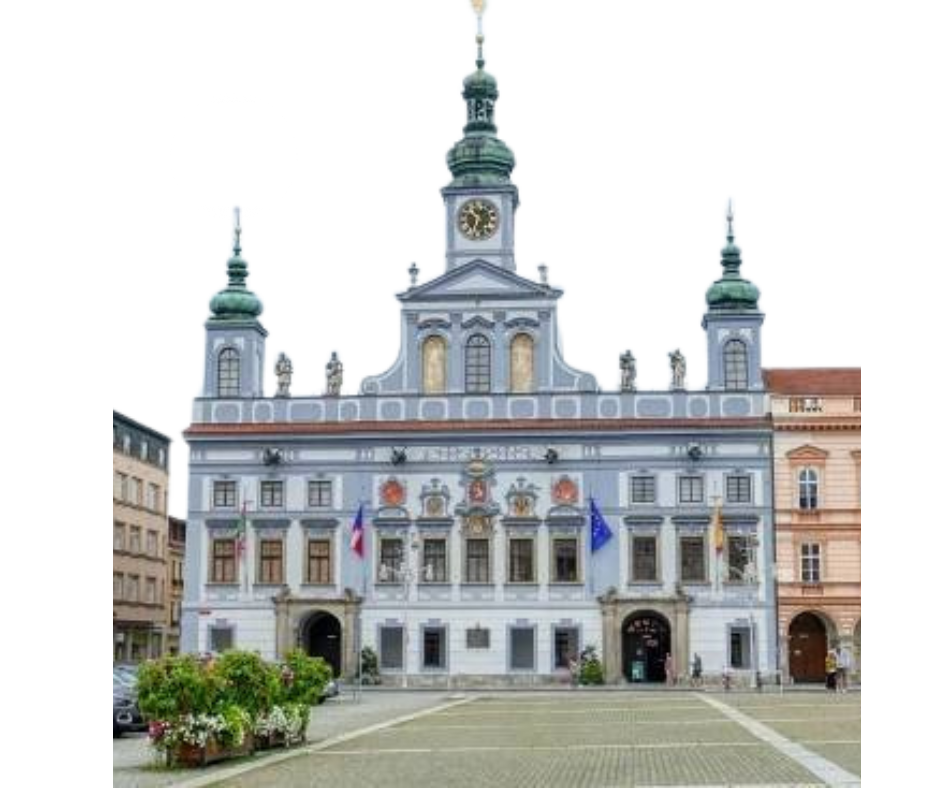


České Budějovice
The metropolis of the South Bohemian Region, with almost 100 thousand inhabitants, boasts a rich history and cultural heritage. This royal city was founded in 1265 by Přemysl Otakar II and is situated at the strategic confluence of the Vltava and Malše rivers. Since its foundation, České Budějovice has become a centre of crafts and trade, which was made possible by its favourable geographical location and helped the rapid development of the city.
In the 16th century, silver was mined in the vicinity of České Budějovice and the town also operated its own mint. Another important milestone in the town’s history was the year 1832, when the first horse-drawn railway to Linz in Austria was opened here. Today, the railway serves as a technical monument and is open to the public.



Koněspřežka /Horserace/
The railway between Linz and České Budějovice, built between 1832 and 1852, is considered the oldest continental railway in Europe. This important milestone in the history of railways was realised thanks to František Antonín Gerstner (1795-1840), who fulfilled the visionary project of his father, F. Josef Gerstner. The route of this railway measured 120.8 km and laid the foundations for the development of the future European railway network.
Centuries later, parts of this historic railway, including embankments and fragments of the original rails, can still be found in the landscape between České Budějovice and Linz. The rails were designed as steel strips nailed to wooden beams. The gauge of the rails was 1106 mm and the distance between the sleepers was exactly one fathom, equivalent to 1896 mm. These technical specifications show the unique design features that contributed to the functionality and durability of this railway.
Since 1847, České Budějovice has been famous for the production of pencils under the Hardmuth brand and also boasts a long tradition in brewing. In 1960, the local exhibition centre was opened, where the popular agricultural exhibition Země živitelka is regularly held. Since 1991, the town has boasted the status of a university town.
The historic centre of the town is dominated by Přemysl Otakar II Square, where you will find the impressive Samson Fountain and the majestic Black Tower. This tower, 72 metres high, stands on one of the corners of the square and is a major landmark of the city.
Samsonova kašna /Samson's Fountain/
Samson’s Fountain, built between 1721 and 1727, is an architectural gem of the Baroque style, which boasts the Přemysl Otakar II Square in České Budějovice. As one of the largest fountains of its kind in the Czech Republic, this fountain not only serves as an important cultural monument, but also as a symbol of the city, celebrating its rich historical and artistic heritage.
The dominant feature of the fountain is an imposing 17-metre diameter stone tank with an octagonal Baroque ground plan. In the centre of this tank rises a prismatic pedestal, decorated with four gargoyle statues on its sides. On this pedestal stands a group of four atlants supporting a huge circular bowl. Another pedestal rises from the bowl, on which is a statue of the biblical hero Samson controlling a lion. Samson is depicted facing north, in the direction of Prague.
Four decorative stone vases are placed around the perimeter of the main basin, aesthetically complementing the overall appearance of the fountain. Around the fountain are 24 stone columns connected by a sturdy chain, giving the fountain a majestic and enclosed character.
Černá věž /The Black Tower/
This tower, originally known by various names such as Nová, Velká, Parní or Městská, has a long history. During the 18th century no major reconstruction took place, which resulted in its gradual deterioration. People therefore began to call the tower Black, which eventually became its official name.
Freestanding urban towers of this type are relatively rare in the Czech lands, unlike in Italy, where such architectural elements are more common. In the Czech Republic, similar towers can only be found in a few towns, including Klatovy, Kolín and Hradec Králové. Due to their location, these towers are unique monuments that are definitely worth visiting and exploring.
This tower was originally built as a defensive structure, serving not only to protect the city from enemy attacks, but also as a fire prevention measure. In addition to its defensive function, it also served as a home for the guard and his family, who lived here until 1956. Among his duties, the watchman had the task of hoisting a banner towards the fire and ringing a warning bell in case of fire. There was also a goat that lived at the top of the tower and was part of the guard’s household.
Českobudějovická radnice /Town Hall/
Originally a Renaissance building from the 16th century, the České Budějovice Town Hall was later rebuilt in Baroque style and is now considered one of the most important architectural treasures of the town.
The reconstruction was carried out between 1727 and 1730 according to the design of Antonio Erhard Martinelli, the court architect of the Schwarzenberg family. The town hall was built on the site of an older Renaissance building and two neighbouring houses. Its richly decorated façade reflects the economic development of the city and the autonomy of the municipal administration of the time.
Above the main central window is the municipal emblem of České Budějovice, which is supplemented by the heraldic symbols of Moravia, Bohemia and Silesia. The façade is also decorated with ancient motifs symbolizing bourgeois virtues such as courage and loyalty.
Z původního opevnění se do současnosti zachovaly některé části hradeb a věží, včetně Železné panny, která je známá díky svému spojení se středověkým mučícím zařízením.
Železná pana /The Iron Lady/
The name “Iron Lady” was inspired by the torture device of that name that was originally placed in the tower. Today, a replica of it is on display here, together with a copy of a letter written by one of the last executioners in Budějovice. Freestanding city towers are relatively uncommon in the Czech lands, compared to Italy, where such architectural features are much more common.
Near the square are well-preserved 16th-century meat shops, which now serve as a popular beer hall of the same name. České Budějovice thus offers visitors not only historical monuments, but also lively culture and gastronomy.
Pivní lázně NINKASI -day spa
L.B. Schneidera 568/1
370 01 České Budějovice
phone: +420 606 953 066
e-mail: ninkasi@pivnilaznecb.cz
